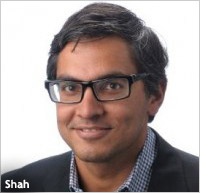
Widespread consumer adoption of smartphones and tablets, along with adoption rates for Google product listing ads (PLAs), continue to drive a
major shift in advertising investments, according to Adobe Systems research released Thursday.
Retail marketers spent 16% more on paid-search campaigns in in 2012, compared with the prior
year. Google took about 86.5% market share in Q4 2012, up from 85.9% in the prior quarter. Sid Shah, director of business analytics at Adobe, attributes the growth to strong mobile traffic
and the transition of Google Shopping from a free to a paid model supported by product listing ads.
Shah identified several trends, such as the growth in Google product listing ads, and tablet
impressions that began immediately after Christmas, creating a new baseline for adoption.
PLAs, which made a transition from a free to paid product in October 2012, accounted for 17% of all
advertising spend on Google by mid-December.
Google increased its market share of retail spend by 0.6% in a year to 86.5%, but nearly all its growth came from PLAs. The new model accounted for
10.7% of overall spend in Q4 2012, nearly the same size as Bing market share at 13.8%. But as the holiday season ramped down, PLA spend fell too.
The Adobe research compares PLA versus
standard text ads. It turns out that PLAs have a 34% higher click-through rate (CTR) compared with text ads. The average order value (AOV) for PLA ads is 12% lower than standard ads. Again, this is
not surprising, given that prices are shown on PLA ads.
Finally, ROI and CPCs on PLA ads are also comparable to standard ads. The market has seamlessly rationalized the price of PLA ads so
that their performance is comparable to the standard ad ROI, the findings explain.
When it comes to tablets and smartphones, mobile accounted for 20% of impressions and spend in Q4. Tablet
campaigns in retail tend to yield 73% higher conversions than desktop campaigns, and originally had a 30% lower cost per click, but that's changing. CPCs on tablets remain lower then desktops but
continue to rise. In the final quarter of the year, tablet CPCs rose to 16%.